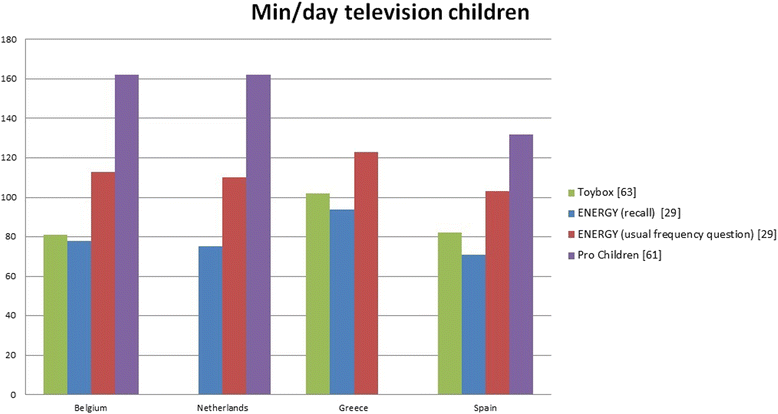Variation in population levels of sedentary time in European children and adolescents according to cross-European studies: a systematic literature review within DEDIPAC
- PMID: 27350043
- PMCID: PMC4924322
- DOI: 10.1186/s12966-016-0395-5
Variation in population levels of sedentary time in European children and adolescents according to cross-European studies: a systematic literature review within DEDIPAC
Abstract
Background: A high amount of sedentary time has been proposed as a risk factor for various health outcomes in adults. While the evidence is less clear in children and adolescents, monitoring sedentary time is important to understand the prevalence rates and how this behaviour varies over time and by place. This systematic literature review aims to provide an overview of existing cross-European studies on sedentary time in children (0-12y) and adolescents (13-18y), to describe the variation in population levels of sedentary time, and to discuss the impact of assessment methods.
Methods: Six literature databases were searched (PubMed, EMBASE, CINAHL, PsycINFO, SportDiscus and OpenGrey), followed by backward- and forward tracking and searching authors' and experts' literature databases. Included articles were observational studies reporting on levels of sedentary time in the general population of children and/or adolescents in at least two European countries. Population levels were reported separately for children and adolescents. Data were reviewed, extracted and assessed by two researchers, with disagreements being resolved by a third researcher. The review protocol is published under registration number CRD42014013379 in the PROSPERO database.
Results: Forty-two eligible articles were identified, most were cross-sectional (n = 38). The number of included European countries per article ranged from 2 to 36. Levels of sedentary time were observed to be higher in East-European countries compared to the rest of Europe. There was a large variation in assessment methods and reported outcome variables. The majority of articles used a child-specific questionnaire (60%). Other methods included accelerometers, parental questionnaires or interviews and ecological momentary assessment tools. Television time was reported as outcome variable in 57% of included articles (ranging from a mean value of 1 h to 2.7 h in children and 1.3 h to 4.4 h in adolescents), total sedentary time in 24 % (ranging from a mean value of 192 min to 552 min in children and from 268 min to 506 min in adolescents).
Conclusion: A substantial number of published studies report on levels of sedentary time in children and adolescents across European countries, but there was a large variation in assessment methods. Questionnaires (child specific) were used most often, but they mostly measured specific screen-based activities and did not assess total sedentary time. There is a need for harmonisation and standardisation of objective and subjective methods to assess sedentary time in children and adolescents to enable comparison across countries.
Keywords: Assessment method; Europe; Health behaviour; Prevalence; Youth.
Figures
References
Publication types
MeSH terms
LinkOut - more resources
Full Text Sources
Other Literature Sources
Medical



